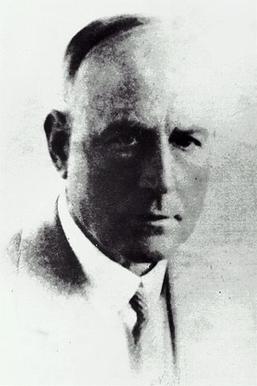Frederick Griffith facts for kids
Quick facts for kids
Frederick Griffith
|
|
|---|---|
 |
|
| Born | 1877 Prescot, England
|
| Died | 1941 (aged 63–64) London, England
|
| Education | Liverpool University |
| Occupation | physician, pathologist, bacteriologist |
| Known for | discovery of pneumococcal transformation |
| Scientific career | |
| Institutions | Ministry of Health Pathological Laboratory, Liverpool Royal Infirmary |
Frederick Griffith (1877–1941) was a British scientist who studied bacteria. He focused on how bacterial pneumonia spreads and causes disease. In 1928, he made a very important discovery. It's now known as Griffith's Experiment.
He was the first to show something called bacterial transformation. This is when a bacterium changes its shape and how it works. He found that a type of bacteria, Streptococcus pneumoniae, could change from one form to another. This bacteria causes many cases of pneumonia.
Griffith's discovery suggested there was an unknown "transforming principle" at work. Later, scientists like Oswald T. Avery found that this principle was actually DNA. Griffith's work was one of the first to show that DNA plays a key role in how traits are passed down.
Contents
Early life and studies
Frederick Griffith was born in Prescot, England, in 1877. He went to Liverpool University. After his studies, he worked at the Liverpool Royal Infirmary. He also worked at other research places, including one that studied Tuberculosis. In 1910, he started working for the local government health board.
Working for the government
During World War I (1914–1918), the government took over the health board's laboratory. It became the Ministry of Health's Pathological Laboratory. Griffith worked there as a medical officer. The lab didn't have a lot of money or fancy equipment. But Griffith and his friend, William M. Scott, were very skilled. They could do amazing research even with simple tools.
Griffith received samples of pneumococci bacteria from patients all over the country. He collected many samples and classified each one. He wanted to find patterns in how pneumonia spread. He also experimented on mice to better understand the disease. Griffith did many important experiments in the 1920s.
When World War II (1939–1945) started, the laboratory grew. It became the Emergency Public Health Laboratory Service.
Griffith's Experiment explained
Pneumococci bacteria come in two main forms: rough (R) and smooth (S). The S form is more dangerous. It has a slippery outer coating called a capsule. This capsule helps the bacteria hide from the body's immune cells. When mice were injected with the S form, they got pneumonia and died quickly.
The R form does not have this capsule. It is usually not as dangerous and doesn't cause pneumonia as often.
Griffith did an important experiment. He injected mice with S bacteria that had been killed by heat. As expected, the mice did not get sick. But then he injected mice with a mixture of heat-killed S bacteria and live R bacteria. Something surprising happened: the mice got pneumonia and died.
This showed that the harmless live R bacteria had changed into the dangerous S form. They then multiplied as S bacteria. This amazing change is what we call Griffith's Experiment. He also found that he could make some pneumococci change back and forth between forms.
Griffith also found that the bacteria could change their "type." This means they changed how their surface looked to the immune system. Different types of pneumococci were identified by other scientists. Griffith showed that a Type I R form could change into a Type II S form, and vice versa. This showed how flexible these bacteria could be.
What happened next
A tragic end
Frederick Griffith died in 1941 during an air raid on London during World War II. His friend and colleague, William M. Scott, also died in the same attack. Scott had just become the director of their laboratory a few weeks earlier.
The transforming factor is found
In 1944, scientists Avery, Colin MacLeod, and Maclyn McCarty at The Rockefeller Hospital made a huge discovery. They found that the "transforming factor" Griffith had observed was actually DNA. Before this, many scientists thought that proteins carried genetic information.
It took another ten years for this idea to be fully accepted. In 1953, Watson and Crick published their famous paper. It showed the structure of DNA. This structure helped explain how DNA, which seemed simple, could carry all the instructions for life.
Impact of Griffith's work
For a while, Griffith's discovery of transformation was not widely noticed. But in the 1950s, genetics research began to grow. Then, biologists started to understand how important his findings were.
His work also had an impact on medicine. In 1967, scientists showed that bacterial transformation could happen naturally inside living things. They also found that certain medicines could even increase this transformation. This could make bacteria more dangerous. Later, in 1969, it was shown that bacteria could pick up genes from other bacteria. This could make them resistant to antibiotics like erythromycin.
Griffith's other work
Frederick Griffith also did other important work with bacteria. In 1931, he helped write a paper about tonsillitis. This is a common throat infection. He studied how it spread and what bacteria caused it.
In 1934, Griffith published a lot of information about another type of bacteria called Streptococcus pyogenes. This bacteria causes many different illnesses. These range from a common strep throat to more serious diseases like scarlet fever. It can also cause very dangerous infections like streptococcal sepsis. Sometimes, these streptococcal infections would happen at the same time as pneumonia.
See also
In Spanish: Frederick Griffith para niños


